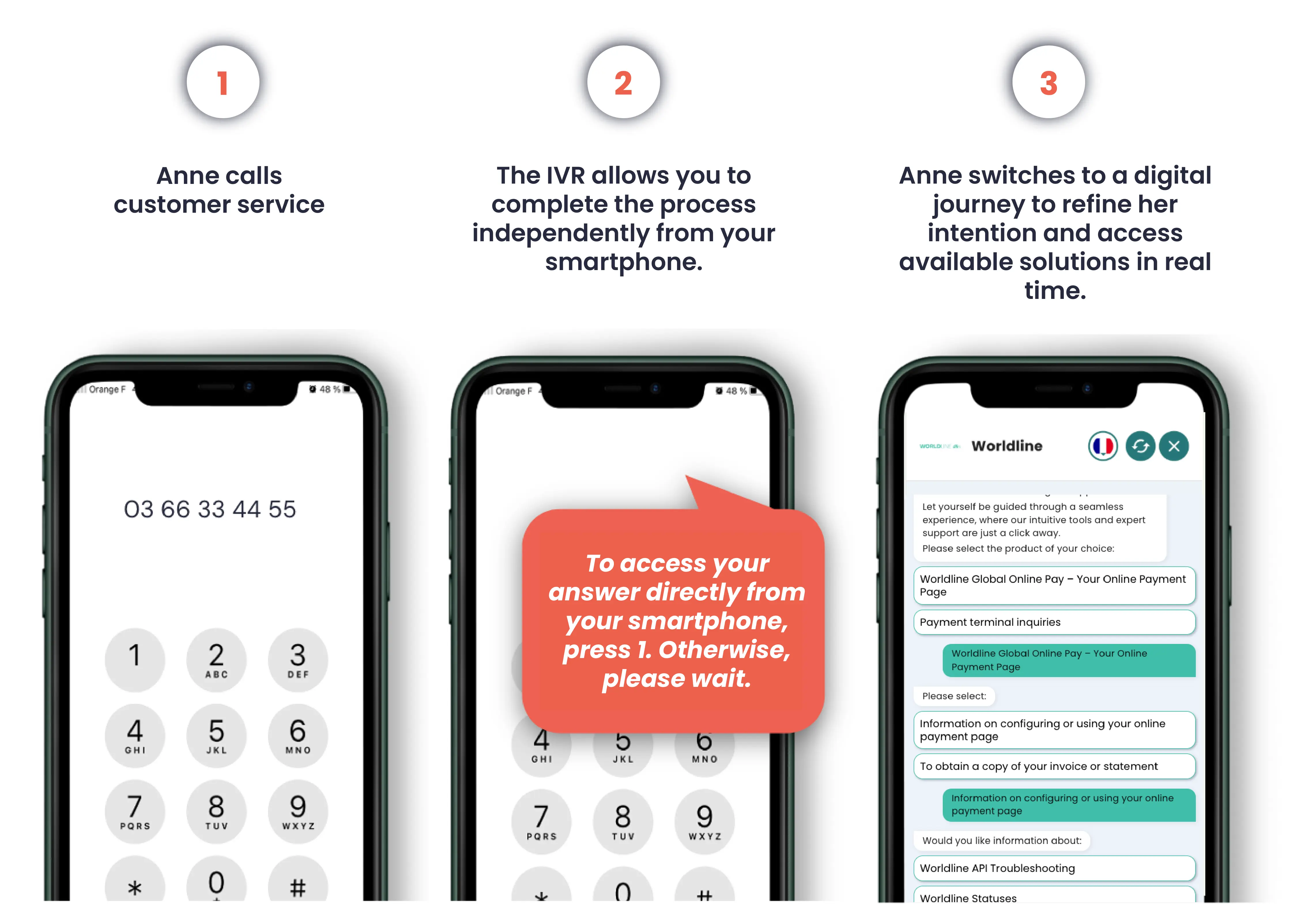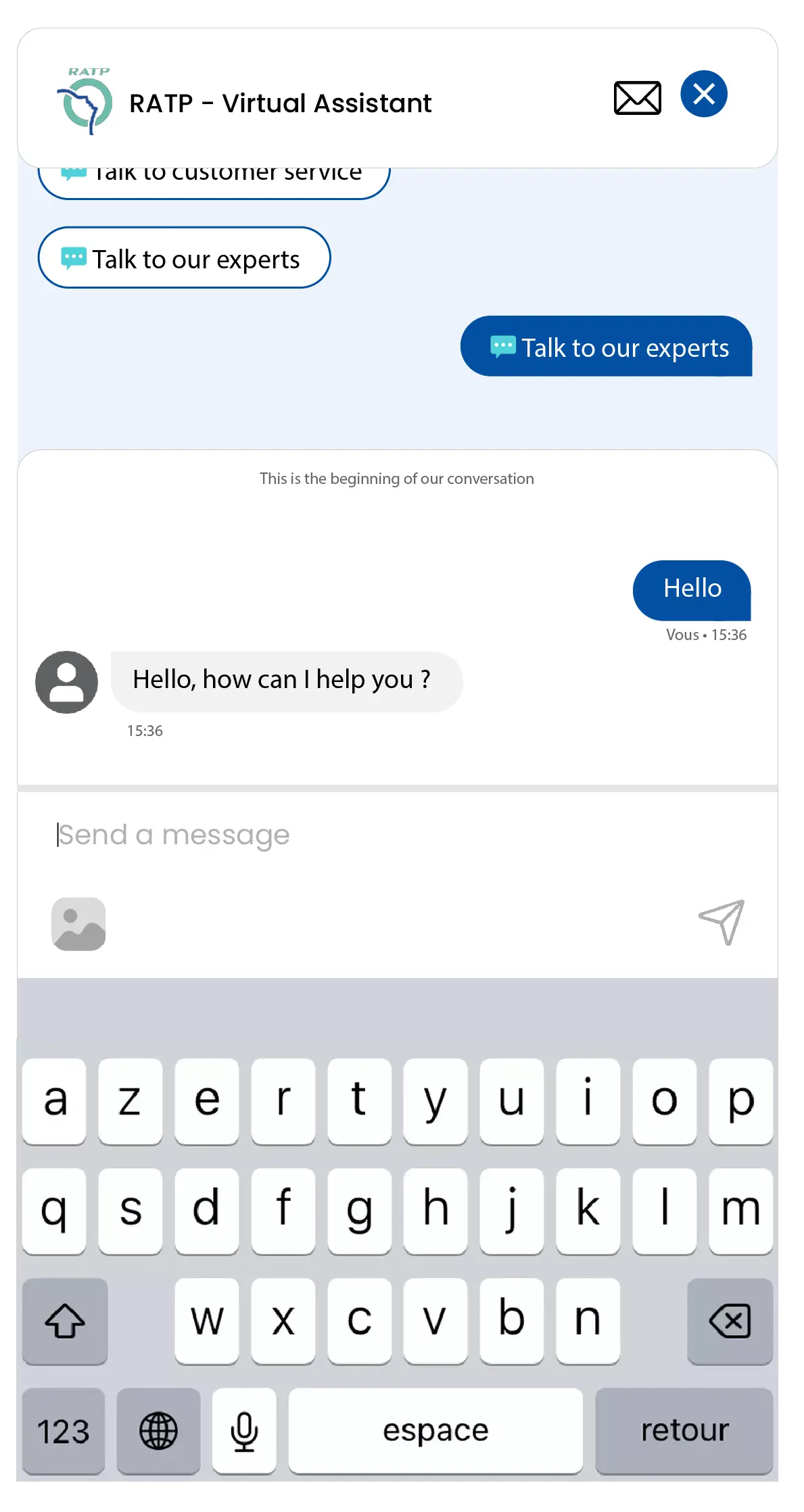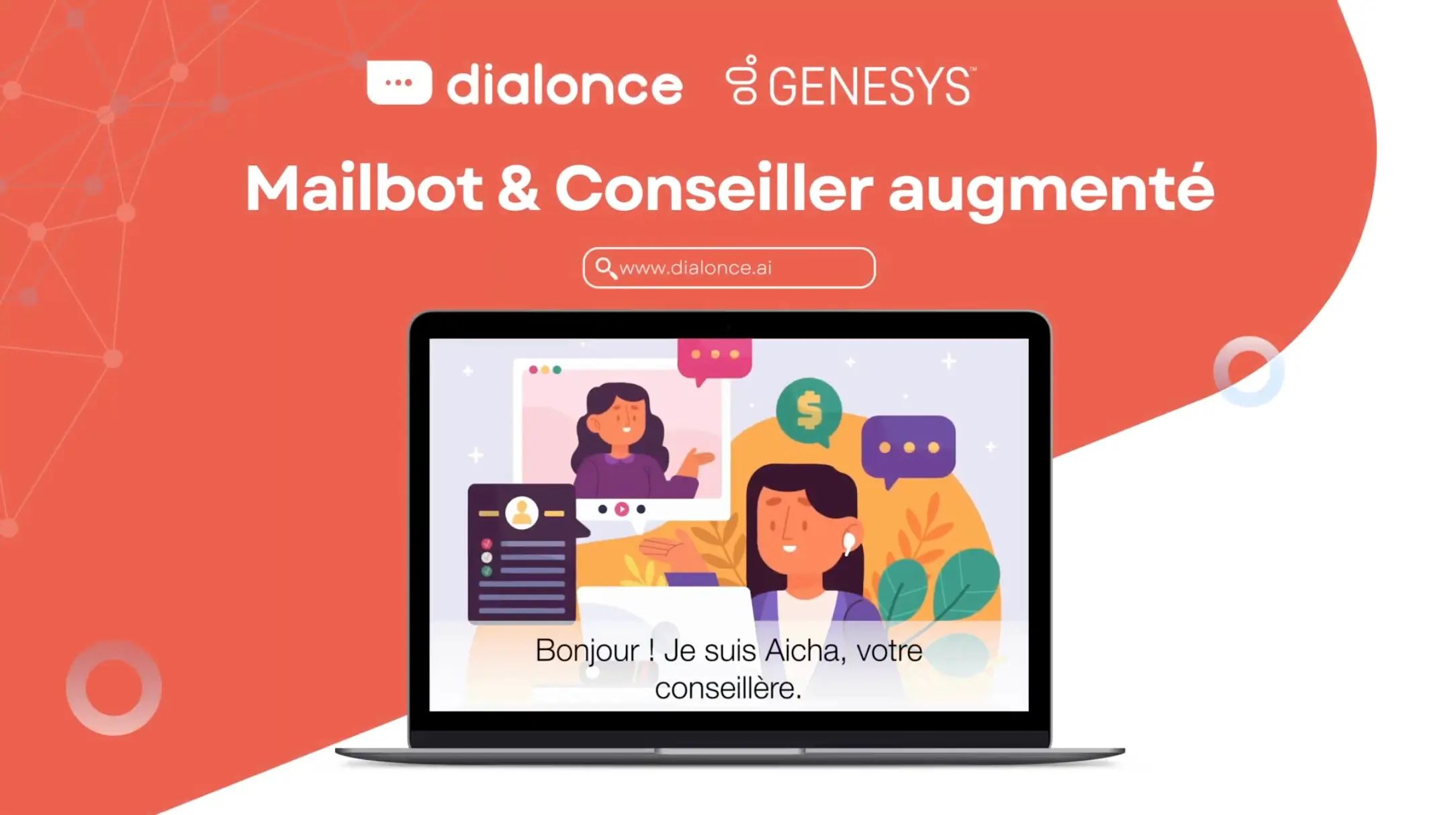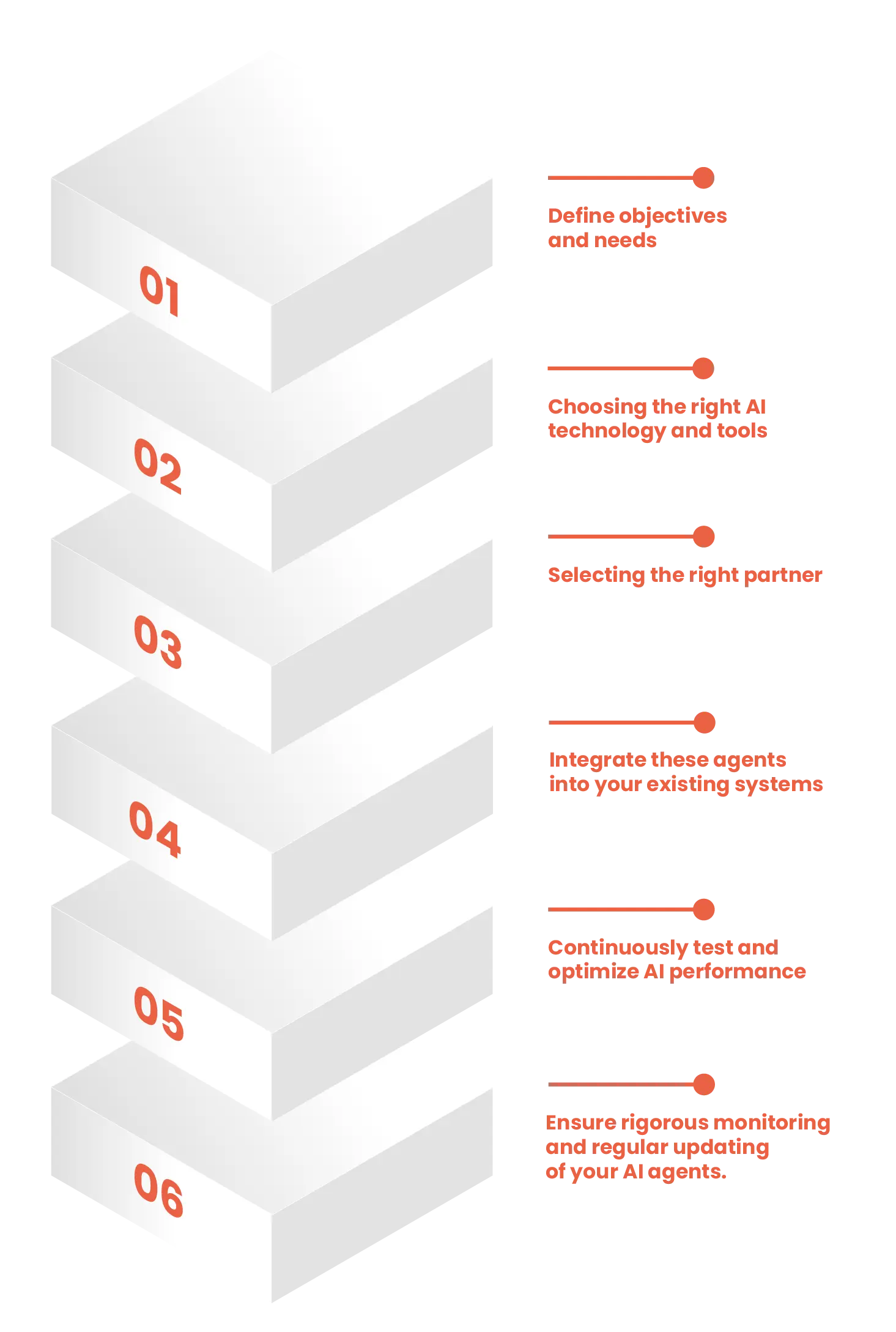Banking
In the banking sector, AI is used to automate routine requests such as tracking a transfer, reissuing an IBAN, or updating an address. A Visual IVR, for instance, allows clients to easily select the reason for their call directly from their phone before even being connected to an advisor. This reduces misrouting and optimizes handling time. Once the request is identified, an omnichannel AI agent can automatically process simple cases or forward more complex ones to an advisor, with all the context already gathered.
If the call needs to be escalated, the Augmented Advisor Agent can provide real-time support by displaying useful regulatory or pricing information to guide the advisor’s response. After the interaction, the automated post-call summary tool generates a clear synthesis and flags any points requiring special attention, such as compliance checks. Together, these tools enable smooth, fast, and secure customer interactions.
Insurance
In the insurance sector, AI tools can automate responses to common requests such as the receipt and tracking of a claim report. When a policyholder reports an incident by email, a mailbot can automatically analyze the message, extract key data (type of incident, date, location), and suggest an appropriate response with the list of required documents.
If the request requires further discussion, it can be forwarded to an advisor. Supported by an augmented advisor agent, the advisor receives real-time recommendations on best practices depending on the contract type or specific policy clauses. The AI agent can also help anticipate objections or suggest alternative solutions.
At the end of the exchange, the post-interaction summary tool generates a structured report, including alerts for potential fraud or priority cases. Altogether, these tools help shorten processing times, improve case traceability, and refocus the advisor’s role on providing human support.
Social Housing
In the social housing sector, AI tools make it easier to prioritize urgent requests and streamline the handling of recurring inquiries. When a tenant reports an issue, an omnichannel AI agent can capture the request on the appropriate channel and, if it is a frequent question (e.g., a rent receipt request), respond automatically. For urgent technical issues (e.g., heating failure, water leak), AI can trigger a priority alert and forward the request to the right department with all the necessary details.
For administrative processes (rent certificate, change of contact details), a mailbot can suggest an automatic reply template, relieving advisors from repetitive exchanges and saving valuable time.
During more complex interactions, an Augmented Advisor Agent can recommend the correct procedures based on the tenant’s profile, contract, or history. The automated call summary then records each interaction and shares useful information across departments (property management, maintenance, social support).
Together, these tools enable advisors to refocus on their core mission: supporting tenants, anticipating risk situations, and maintaining a close, trusted relationship with residents.








